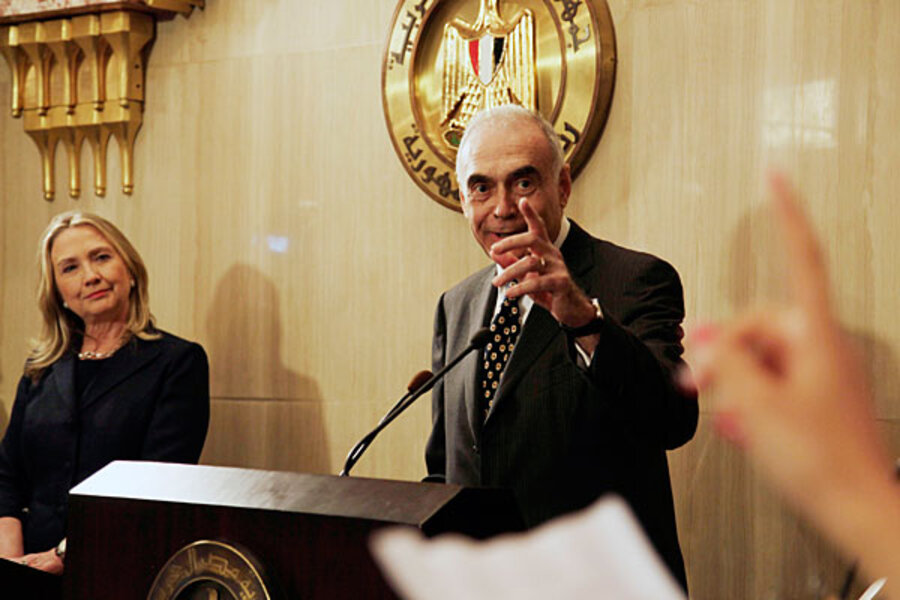Conflict in Gaza: Why is US taking a back seat?
Loading...
| WASHINGTON
As Egypt assumes a central role in efforts to reach a cease-fire in the Israel-Gaza conflict – and as a parade of Arab leaders jockey to show solidarity with Hamas – one country appears to be sitting on the diplomatic sidelines: the United States.
Both President Obama and Secretary of State Hillary Rodham Clinton – traveling together in Southeast Asia this week – have made repeated phone calls to leaders in Middle East. They have emphasized Israel’s right to defend itself from rockets launched by militant groups inside Hamas-governed Gaza.
But the US role has stood out more for its backstage efforts. Other international leaders, from United Nations General Secretary Ban Ki-moon to British Prime Minister David Cameron and Turkish Prime Minister Recep Tayyip Erdogan, have seemed to stand out more prominently in efforts to stop the fighting. On Tuesday, an Arab League delegation is expected to visit Gaza.
As of Monday evening, the cross-border attacks have claimed more than 100 lives – all but three on the Palestinian side – as Israel has stepped up its targeting of Hamas leaders and other militants in Gaza’s densely populated neighborhoods.
The apparent low American profile can be traced to several developments during recent years, regional analysts say:
- The Arab Spring has ushered in new, pro-Islamist governments in a number of countries, including Egypt and Tunisia, spelling a relative decline in US influence over events in the region.
- Obama’s attempt right out of the blocks of his first term at reaching an Israeli-Palestinian peace accord got nowhere, and since then the president has focused on a “light footprint” approach that critics call “leading from behind.” It downplays the high-profile “shuttle diplomacy” of the past and encourages other regional leaders to step up their involvement.
- Israel's largely US-funded Iron Dome missile-defense shield has shot down many incoming rockets. That has reduced the pressure on Israel’s leaders to carry out a ground invasion that the US believes could be as grave in its consequences for Israel as it would be for Gazans.
The Iron Dome may be the biggest game changer since Israel and Hamas last battled each other in 2008, some regional experts say. That conflict, like this one, took place between a US presidential election and an Israeli election. Israel proceeded with a ground invasion that resulted in more than 1,400 casualties in Gaza, by some estimates – most of them civilians – and diplomatic isolation for Israel.
US officials warn that another Israeli drive into Gaza would result in perhaps irresistible public pressure on the leaders of Egypt and Jordan, the only two Arab countries that have signed peace treaties with Israel. The end of those treaties – in particular the Camp David accords between Egypt and Israel – would undo decades of US diplomatic efforts in the region.
Israeli leaders insist they prefer to settle their issues with Hamas diplomatically, but they also say they have a set of demands that must be met – including an end to the threat of rocket fire from Gaza and steps to end the smuggling of new rockets and other weapons into Gaza.
As for Hamas, its overarching goal is to achieve an end to Israel’s five-year-old blockade of Gaza, and to use what it sees as its empowered standing in an increasingly Islamist Middle East to exact a nonaggression commitment from Israel.
At this point, both sides are sticking to their maximum demands in cease-fire negotiations. It remains to be seen if these no-compromise positions – not to mention the region’s new environment – leave any room for American diplomacy.







